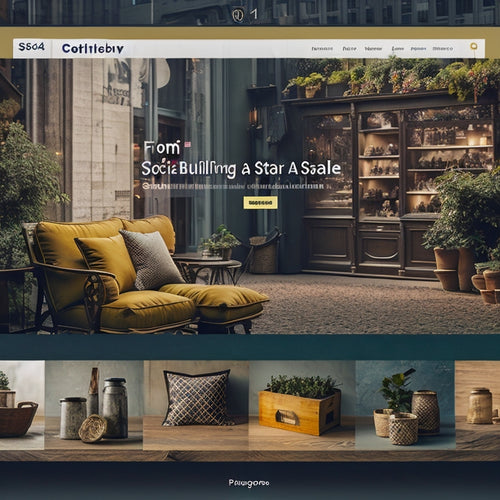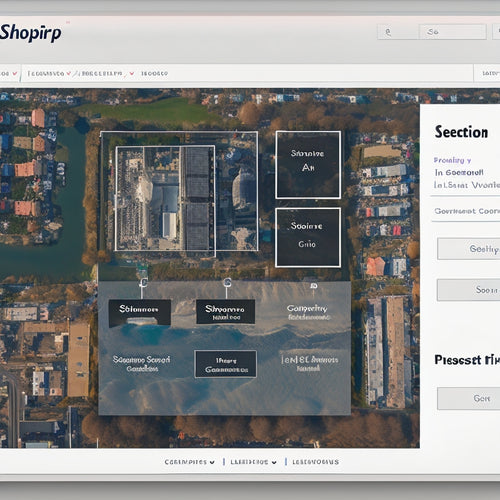
Retailers Boost Sales With Blogging Strategies
Share
By incorporating blogging into their marketing strategies, retailers can effectively boost sales and revenue by building strong customer relationships, fostering brand loyalty, and staying ahead of the competition. A well-executed blog can drive conversions, encourage customer engagement, and establish a retailer as an industry authority. To succeed, retailers must select the right platform, craft compelling content, and foster conversations with their audience. By avoiding common pitfalls and staying focused on customer-centric topics, retailers can harness the full potential of blogging and reap the rewards of increased sales and long-term customer loyalty. The key to success lies in creating a seamless and engaging experience.
Key Takeaways
• Retailers can enhance their online presence and credibility by creating high-quality, customer-centric blog content that drives sales and revenue.
• Selecting the right blog platform is crucial for seamless integration with existing ecommerce systems and customization options that cater to specific business needs.
• Crafting compelling content strategies involves defining a unique voice, creating a content calendar, and utilizing storytelling techniques to foster customer loyalty.
• Engaging customers through conversations on blogs helps build trust, gathers valuable insights, and encourages loyalty by soliciting and responding to customer feedback.
• Avoiding common blogging pitfalls, such as inconsistent posting and overly promotional content, ensures tangible results from blogging efforts and maintains customer trust.
Why Blogging Matters for Retailers
In today's digital landscape, where customer engagement and online visibility are paramount, blogging has emerged as an essential strategy for retailers seeking to stay ahead of the competition and drive sales.
By establishing a blog, retailers can increase their online presence, fostering increased visibility and credibility among their target audience. Additionally, blogging enables retailers to build strong relationships with customers, cultivating customer loyalty through regular communication and valuable content. This, in turn, can lead to increased sales and revenue.
Choosing the Right Blog Platform
Selecting a suitable blog platform is a pivotal decision that can greatly impact the overall success of a retailer's blogging strategy, as it directly influences the ease of content creation, customization options, and integration with existing ecommerce systems.
A thorough platform comparison is essential to guarantee the chosen platform aligns with the retailer's goals and requirements. When evaluating platforms, retailers should consider factors such as scalability, flexibility, and customization options.
Blog customization is critical, as it allows retailers to tailor their blog's design and layout to their brand's unique voice and aesthetic. By choosing the right platform, retailers can create a seamless and engaging blogging experience that drives sales and fosters customer loyalty.
Crafting Compelling Content Strategies
With a suitable blog platform in place, online retailers can now focus on crafting compelling content strategies that resonate with their target audience and drive sales. A well-planned content strategy is essential to engaging customers and building brand loyalty.
To achieve this, retailers should:
-
Define their unique voice: Develop a distinct tone and style that mirrors their brand's personality.
-
Create a content calendar: Plan and schedule content in advance to guarantee consistency and relevance.
-
Focus on customer-centric topics: Address customer pain points, interests, and concerns to promote audience engagement.
- Use storytelling techniques: Share relatable, authentic stories that evoke emotions and establish connections with customers.
Engaging Customers Through Conversations
By facilitating open and honest dialogue, online retailers can foster a sense of community and encourage customer loyalty through conversations that are both personal and relevant.
This is achieved by actively soliciting and responding to customer feedback, demonstrating a genuine interest in their needs and concerns. By doing so, retailers can build trust and credibility, creating a loyal customer base that will drive repeat business and advocacy.
Building community through conversations also allows retailers to tap into valuable insights, gathering firsthand information on customer preferences and pain points. This information can be used to inform product development, marketing strategies, and overall business decisions, ultimately driving sales and growth.
Avoiding Common Blogging Pitfalls
Effective blogging for online retailers requires more than just creating and sharing compelling content; it also demands a keen awareness of common pitfalls that can undermine even the best-intentioned blogging strategies. By being mindful of these potential pitfalls, retailers can guarantee their blogging efforts yield tangible results.
Here are 4 common blogging pitfalls to avoid:
-
Lack of blogger authenticity:
Guarantee your blog reflects your brand's voice and personality to build trust with customers. -
Inconsistent posting schedules:
Regularly post high-quality content to keep customers engaged and coming back for more. -
Ignoring customer feedback:
Respond to customer comments and concerns to foster a sense of community and encourage loyalty.
-
Overly promotional content:
Strike a balance between promoting products and providing valuable, informative content to maintain customer interest.
Frequently Asked Questions
How Can I Balance Blogging With Other Marketing Priorities?
"A million tasks competing for your attention? Effective time management is key to balancing blogging with other marketing priorities. Prioritize content creation, maintain blog consistency, and align your blogging strategy with overarching marketing goals to maximize ROI."
Can I Outsource Blogging to Freelancers or Agencies?
When outsourcing blogging to freelancers or agencies, prioritize content quality and brand consistency to maintain authenticity, ensuring that external writers align with your brand's voice, tone, and messaging to foster trust with your target audience.
How Often Should I Post New Content to My Blog?
To optimize engagement, consider posting new content 2-3 times a week, ensuring consistent frequency while allowing for SEO optimization and staying on top of trending topics, striking a balance between freshness and audience fatigue.
What Metrics Should I Track to Measure Blog Success?
'A million metrics await, but focus on the essential few: track engagement rates, conversion rates, and comments to gauge blog success, ensuring a harmonious marriage of content and commerce that yields tangible results.'
Can I Use My Blog to Announce Company News and Promotions?
When announcing company news and promotions, consider integrating your blog with social media and email marketing campaigns to maximize reach and engagement, ensuring a cohesive brand voice while maintaining a safe and trustworthy online presence.
Related Posts
-

How Do I Get Social Proof on Shopify
This article explores the concept of obtaining social proof on the Shopify platform. It highlights the benefits of i...
-

Adding Sitemap to Your Shopify Store: A Complete Guide
This article aims to provide a comprehensive guide on the process of adding a sitemap to a Shopify store. A sitemap ...

